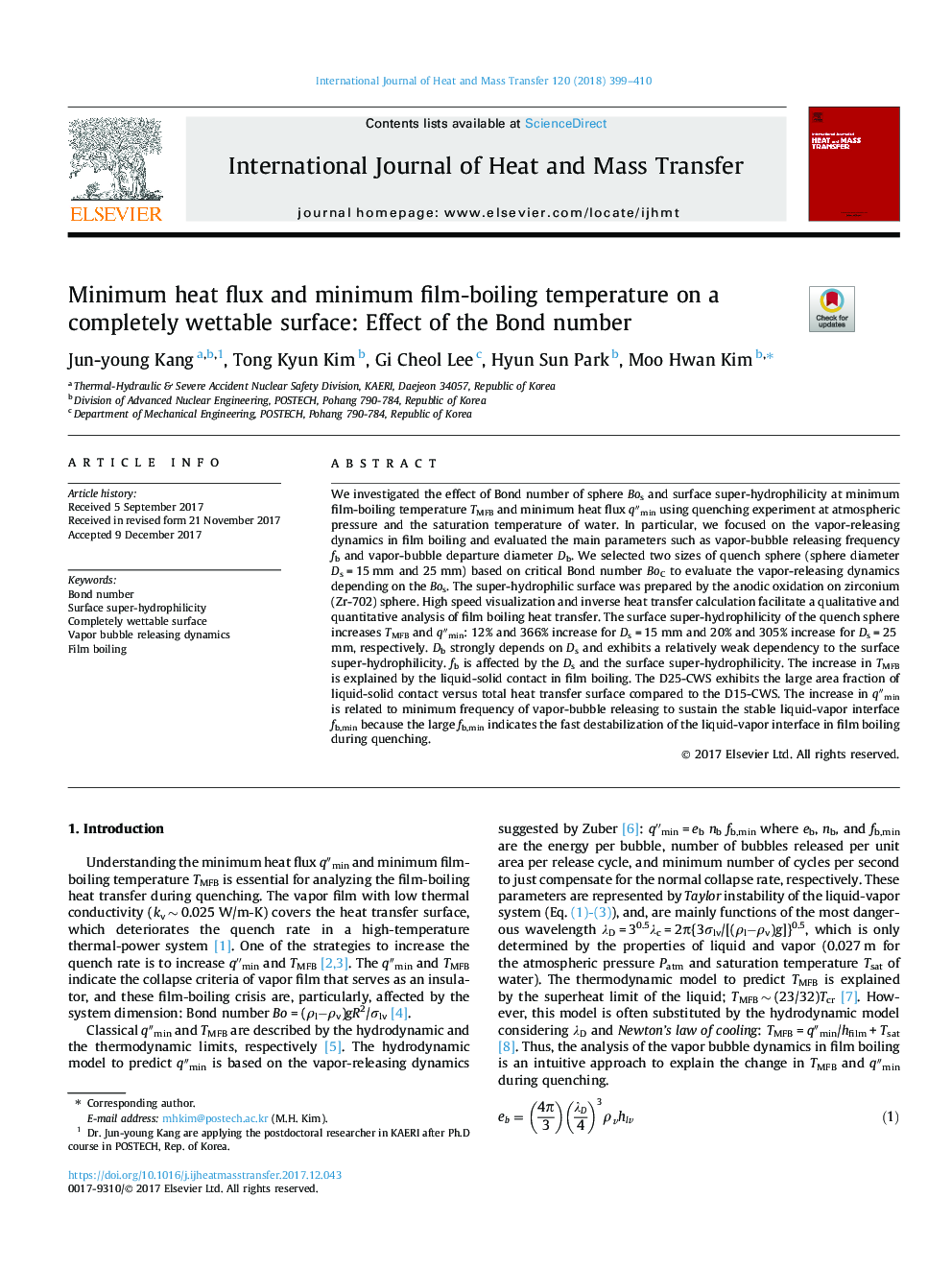| Article ID | Journal | Published Year | Pages | File Type |
|---|---|---|---|---|
| 7054578 | International Journal of Heat and Mass Transfer | 2018 | 12 Pages |
Abstract
We investigated the effect of Bond number of sphere Bos and surface super-hydrophilicity at minimum film-boiling temperature TMFB and minimum heat flux qâ³min using quenching experiment at atmospheric pressure and the saturation temperature of water. In particular, we focused on the vapor-releasing dynamics in film boiling and evaluated the main parameters such as vapor-bubble releasing frequency fb and vapor-bubble departure diameter Db. We selected two sizes of quench sphere (sphere diameter Dsâ¯=â¯15â¯mm and 25â¯mm) based on critical Bond number BoC to evaluate the vapor-releasing dynamics depending on the Bos. The super-hydrophilic surface was prepared by the anodic oxidation on zirconium (Zr-702) sphere. High speed visualization and inverse heat transfer calculation facilitate a qualitative and quantitative analysis of film boiling heat transfer. The surface super-hydrophilicity of the quench sphere increases TMFB and qâ³min: 12% and 366% increase for Dsâ¯=â¯15â¯mm and 20% and 305% increase for Dsâ¯=â¯25â¯mm, respectively. Db strongly depends on Ds and exhibits a relatively weak dependency to the surface super-hydrophilicity. fb is affected by the Ds and the surface super-hydrophilicity. The increase in TMFB is explained by the liquid-solid contact in film boiling. The D25-CWS exhibits the large area fraction of liquid-solid contact versus total heat transfer surface compared to the D15-CWS. The increase in qâ³min is related to minimum frequency of vapor-bubble releasing to sustain the stable liquid-vapor interface fb,min because the large fb,min indicates the fast destabilization of the liquid-vapor interface in film boiling during quenching.
Keywords
Related Topics
Physical Sciences and Engineering
Chemical Engineering
Fluid Flow and Transfer Processes
Authors
Jun-young Kang, Tong Kyun Kim, Gi Cheol Lee, Hyun Sun Park, Moo Hwan Kim,
